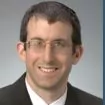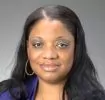The USPTO issued new guidelines for determining if claims are eligible for patenting in light of the Association for Molecular Pathology v. Myriad Genetics, Inc., 569 U.S., 133 S. Ct. 2107, 2116, 106 USPQ2d 1972 (2013), and Mayo Collaborative Services v. Prometheus Laboratories, Inc., 566 U.S. _132 S. Ct. 1289, 101 USPQ2d 1961 (2012), decisions from the U.S. Supreme Court. In a March 4, 2014 memorandum to the Patent Examining Corps, the USPTO explains that the new guidance "implements a new procedure to address changes in the law relating to subject matter eligibility under 35 U.S.C. § 101."
The new guidelines, entitled Guidance For Determining Subject Matter Eligibility Of Claims Reciting Or Involving Laws of Nature, Natural Phenomena, & Natural Products (Guidelines), are effective immediately and supersede the guidance issued on June 13, 2013, when Myriad was decided. The Guidelines are for use in subject matter eligibility determinations of "all claims (i.e., machine, composition, manufacture and process claims) reciting or involving laws of nature/natural principles, natural phenomena, and/or natural products." However, the Guidelines do not apply to claims reciting an abstract idea, "which should continue to be analyzed for subject matter eligibility using the existing guidance in MPEP § 2106(II)." Stakeholders and patent practitioners will need to pay close attention to the multiple factors to be considered and the examples recited in the Guidelines as they potentially impact patent eligibility determinations across a broad range of technologies.
Expansion of Myriad to All Natural Products, Not Just Nucleic Acids
Importantly, the Guidelines expand the holding in Myriad to all natural products, not merely nucleic acids, that are not "significantly different" than the product found in nature. According to the USPTO, "while the holding in Myriad was limited to nucleic acids, Myriad is a reminder that claims reciting or involving natural products should be examined for a marked difference under Chakrabarty." The USPTO also interprets Myriad as "clarify[ying that] not every change to a natural product will result in a marked difference, and that the mere recitation of particular words (e.g., "isolated") in the claims does not automatically confer eligibility." Thus, while the holding in Myriad was fairly focused, these Guidelines are relevant to all claims reciting or involving all natural products.
USPTO Examples Underscore Breadth Of The Guidelines
The Guidelines include eight sets of exemplary claims (Examples A-H) directed to different subject matter, and analyze their subject matter eligibility under the new guidelines. The examples underscore the breadth of the Guidelines and their potential impact on patent eligibility determinations across a broad range of technologies:
- Example A ("Composition/Manufacture Claim Reciting A Natural Product") is based on Chakrabarty, and includes one claim that is and one claim that is not subject matter eligible.
- Example B ("Composition vs. Method Claims, Each Reciting a Natural Product") relates to a purified, naturally occurring cancer-fighting chemical. According to the Guidelines, the purified naturally occurring protein is not patent eligible because it is not "significantly different" than what is found in nature. On the other hand, a chemically modified version of the compound and method of using the compound to treat cancer are indicated to be patent eligible because the method is directed to a cancer type not previously treated with this compound.
- Example D ("Composition Claim Reciting Multiple Natural Products") is based on Funk Brothers, and presents a composition claim reciting multiple natural products that is not patent eligible, even though the mixture was not previously known to occur in nature.
- Example E ("Composition vs. Method Claims, Each Reciting Two Natural Products") presents a claim reciting a pair of DNA primers comprised of naturally occurring sequences that is not patent eligible, and a claim reciting a method of amplifying a target DNA sequence using the primers that is patent eligible, because it recites subject matter that is "significantly different than the natural products" and contains steps that do not preempt all uses of the technology.
- Example F ("Process Claim Involving A Natural Principle And Reciting Natural Products") may be closer to Prometheus than Myriad, as the claim relates to "A method for determining whether a human patient has degenerative disease X." The Guidelines finds that the method, which includes several specific steps, is patent eligible.
- Example G ("Process Claims Involving A Natural Principle") is based on an example from the USPTO's 2012 Prometheus guidelines, and indicates that the patent eligibility of a method of treatment based on a natural principle depends on the level of detail with which the method is recited.
- Example H ("Process Claim Reciting An Abstract Idea And A Natural Product") is based on claim 1 of Myriad's U.S. Patent No. 6,033,857, and is provided as an example of a claim that should be examined under the "abstract idea" guidelines of MPEP § 2106(II) even though it recites a natural product.
Case-By-Case Consideration Of Multiple Factors
The Guidelines provide that patent eligibility is to be determined on a case-by-case basis, upon consideration of multiple factors that may weigh towards or against patent eligibility. Because the Guidelines represent a significant change in the patent eligibility examination process, stakeholders with pending patent applications should consider seeking advice of counsel as to the potential impact of the Guidelines on their patent portfolios.
The content of this article is intended to provide a general guide to the subject matter. Specialist advice should be sought about your specific circumstances.






